Manova World aims to be Second Life VR, but its hand-tracking has a life of its own
An ambitious social VR experience with some flaws
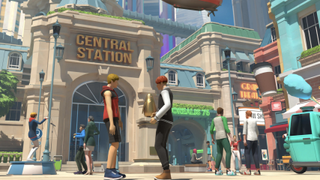
You could argue that it’s the ultimate goal for virtual reality – the creation of a persistent, physically-impossible world which you can freely explore with your friends, all the while becoming an idealized avatar of your choosing. It’s the central conceit of Ernest Cline’s Ready Player One and Neal Stephenson’s Snow Crash among other fictitious works, and has companies like Facebook clamoring to turn it into a reality with its Facebook Horizon platform for Oculus VR headsets.
But Facebook has been beaten to the punch by Manova World, a virtual reality social platform developed by XRSpace. It’s Second Life for VR, essentially, and while it’s a bit rough around the edges, it shows the potential for interactive social spaces in the virtual realm.
XRSpace has quite the VR pedigree behind it. It’s led by Peter Chou, the co-founder of HTC, who spearheaded the company’s then-leading charge into VR with the HTC Vive. Rather than flashy games or establishing big franchise names, XRSpace’s vision for VR is all about social. From meet ups with your pals to educational seminars to business spaces, XRSpace hopes to host it all in Manova World. And we took a stroll through its digital halls, streets and fun fairs.
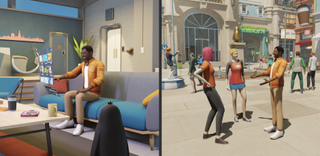
- Best VR headset: which should you buy?
- Here are the best VR games too
A Manova about town
Using the accompanying mobile app, Manova World uses a selfie to make a rough estimation of your likeness as an avatar, ready to be tweaked and inserted into its VR social spaces. Unlike Facebook’s Oculus Avatars, or even the upcoming ones headed to Facebook Horizons, these are full-body avatars with all limbs accounted for, giving the avatars a more Sims-like appearance.
Hand-tracking is a key part of the experience, and so you can wave your arms around (not to mention trigger pre-choreographed poses and gestures, from waves to magically conjuring a drum kit from thin air), but there’s no lower body tracking, so those legs are just for show for now. Friends lists, private and proximity chat are all supported.
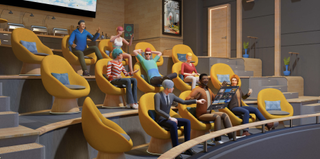
The variety of what Manova World wants to host is ambitious and laudable. There are cinema rooms, private yoga spaces, bars, clubs, beaches, carnivals and more. You can watch 360-degree videos with your avatars in a group, with the video synced simultaneously, and eventually play mini games together – though interactivity is currently limited, there are whole individual apps dedicated to just these singular functions, let alone packaging them all together in a single shared space.
Though pricing is yet to be set, XRSpace is in talks not only to provide individual users with in-world real-estate, but companies and brands too, allowing remote workers to collaborate in a shared and persistent 3D space. I was shown large theater spaces for seminars and video screenings, as well as the ability to interact and scale 3D models in this group discussion settings. A serious sense of “I’m-late-for-my-university-lecture” deja vu kicked in.
Get the best Black Friday deals direct to your inbox, plus news, reviews, and more.
Sign up to be the first to know about unmissable Black Friday deals on top tech, plus get all your favorite TechRadar content.
Hardware exclusivity
Currently, Manova is exclusive to the XRSpace Manova headset, built in-house, an all-in-one device costing €499.00 (about £430 / $590). It’s a little behind the curve, with a plasticky construction that undersells what’s going on under the hood. It is powered by a Qualcomm Snapdragon 845 with 6GB of RAM, 64GB of storage for a selection of third party apps, a 4,600 mAh battery (good for about 2.5 hours of use) and a 2,880 x 1,440 display with a 90Hz refresh rate. These specs look good on paper, but don’t work so well in practice – perhaps downscaled so as not to stress the hardware, Manova World never looked as sharp as that screen spec would suggest, while the cooling fans inside whirred loudly and persistently shortly after entering the VR realm. Where available, XRSpace is also looking to tap into 5G connectivity with its hardware, giving greater flexibility and mobility to the always-connected experience.
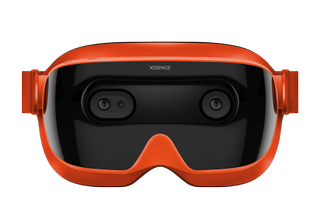
It’s also one of the only headsets to feature built-in hand tracking (not to mention outside-in tracking, generally), but its execution is a bit patchy. It regularly lost track of where my hands were floating, and the pinch-to-select menu gesture worked – but would often select the wrong item as my VR hands inadvertently veered over an unwanted menu option. This led to a humorously-brief excursion during my demo session with Manova World’s creators where I was whisked away and accidentally became lost in some sort of circus land after arranging a rendezvous at Manova’s beach environment instead. Thankfully, I was not met by any creepy virtual clowns.
But XRSpace is pragmatic about Manova World’s future. It’s aware of its own hardware’s limitations (understandable, given the blueprints were drawn up around four years ago, a time when all-in-one hand tracking VR solutions weren’t commercially available), and sees the long-term future of Manova extending to other hardware and VR platforms. XRSpace is expecting to bring Manova World to other VR platforms later this year, and is aiming to have 50,000 users in the next 12 months as a result.
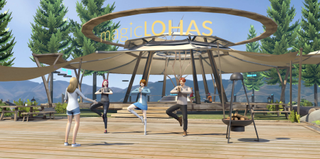
There’s work to be done on both the hardware and software front for XRSpace if Manova World is to match its ambitions – expanding and improving hand tracking, and ramping up customizable player-owned hang-out spaces chief among them. This sort of experience is ripe not only to harvest the millions of Second Life and Animal Crossing players who love to dress up their ideal home, but also the monetization options that come with that.
But the core principle stands up – VR is great, VR with friends is better. Virtual reality destinations like Manova World will be core to familiarizing the masses with the potential benefits of VR headsets beyond the world of gaming and, in this age of social distancing, might safely help bring us all a bit closer together, too.
Gerald is Editor-in-Chief of iMore.com. Previously he was the Executive Editor for TechRadar, taking care of the site's home cinema, gaming, smart home, entertainment and audio output. He loves gaming, but don't expect him to play with you unless your console is hooked up to a 4K HDR screen and a 7.1 surround system. Before TechRadar, Gerald was Editor of Gizmodo UK. He is also the author of 'Get Technology: Upgrade Your Future', published by Aurum Press.
Most Popular



